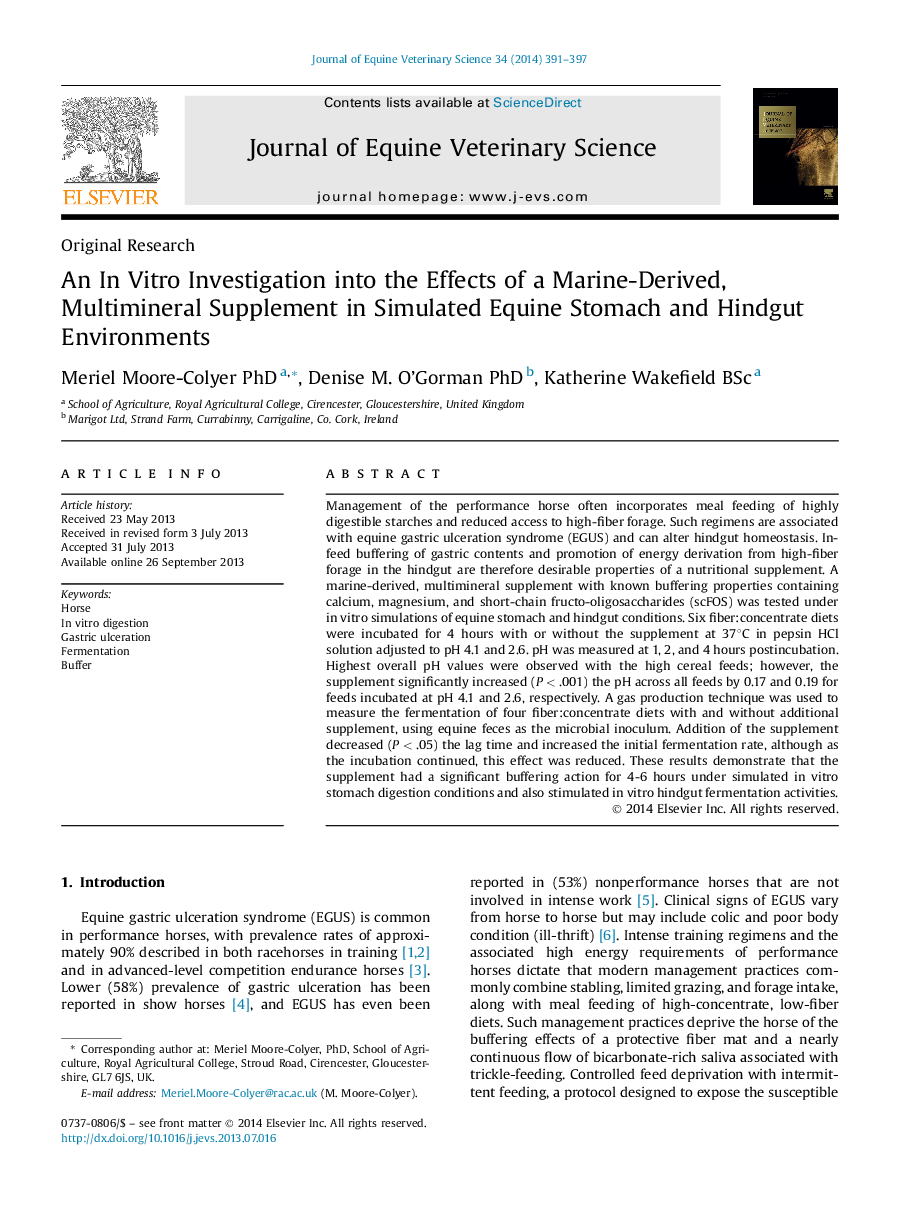| Article ID | Journal | Published Year | Pages | File Type |
|---|---|---|---|---|
| 10961511 | Journal of Equine Veterinary Science | 2014 | 7 Pages |
Abstract
Management of the performance horse often incorporates meal feeding of highly digestible starches and reduced access to high-fiber forage. Such regimens are associated with equine gastric ulceration syndrome (EGUS) and can alter hindgut homeostasis. In-feed buffering of gastric contents and promotion of energy derivation from high-fiber forage in the hindgut are therefore desirable properties of a nutritional supplement. A marine-derived, multimineral supplement with known buffering properties containing calcium, magnesium, and short-chain fructo-oligosaccharides (scFOS) was tested under in vitro simulations of equine stomach and hindgut conditions. Six fiber:concentrate diets were incubated for 4 hours with or without the supplement at 37°C in pepsin HCl solution adjusted to pH 4.1 and 2.6. pH was measured at 1, 2, and 4 hours postincubation. Highest overall pH values were observed with the high cereal feeds; however, the supplement significantly increased (P < .001) the pH across all feeds by 0.17 and 0.19 for feeds incubated at pH 4.1 and 2.6, respectively. A gas production technique was used to measure the fermentation of four fiber:concentrate diets with and without additional supplement, using equine feces as the microbial inoculum. Addition of the supplement decreased (P < .05) the lag time and increased the initial fermentation rate, although as the incubation continued, this effect was reduced. These results demonstrate that the supplement had a significant buffering action for 4-6 hours under simulated in vitro stomach digestion conditions and also stimulated in vitro hindgut fermentation activities.
Related Topics
Life Sciences
Agricultural and Biological Sciences
Animal Science and Zoology
Authors
Meriel PhD, Denise M. PhD, Katherine BSc,
